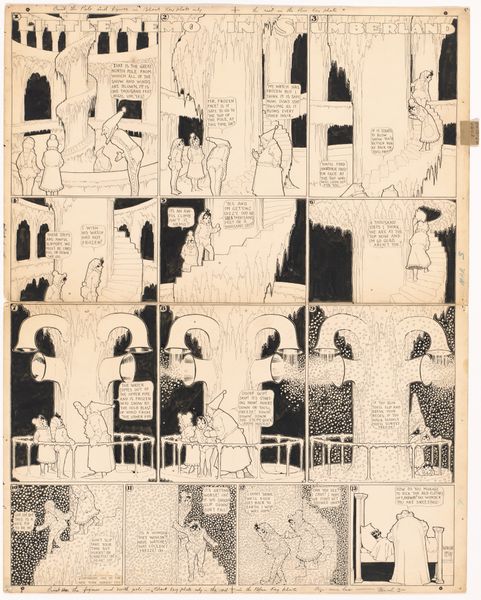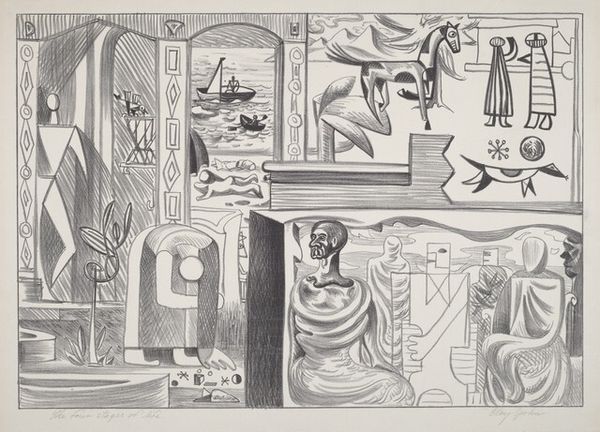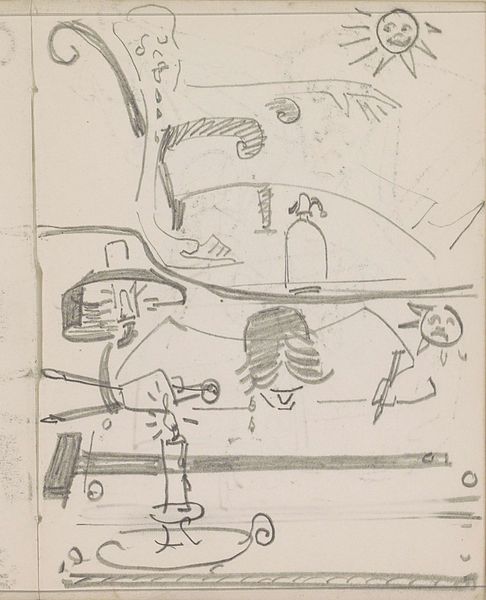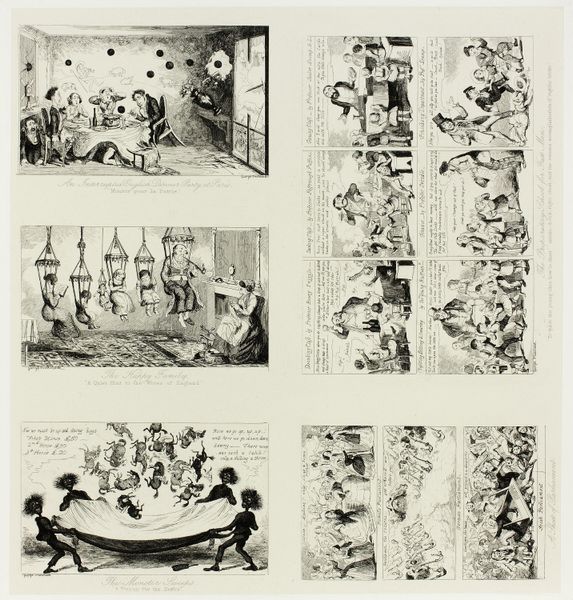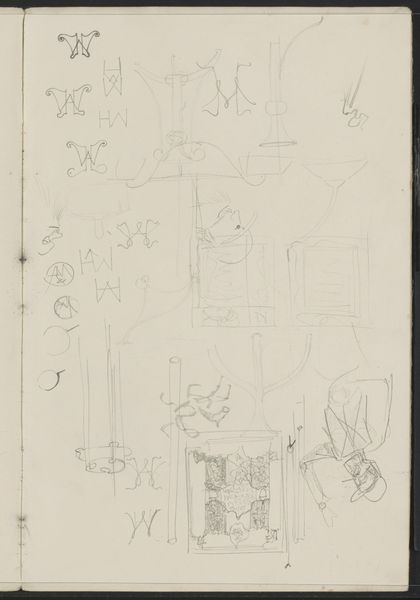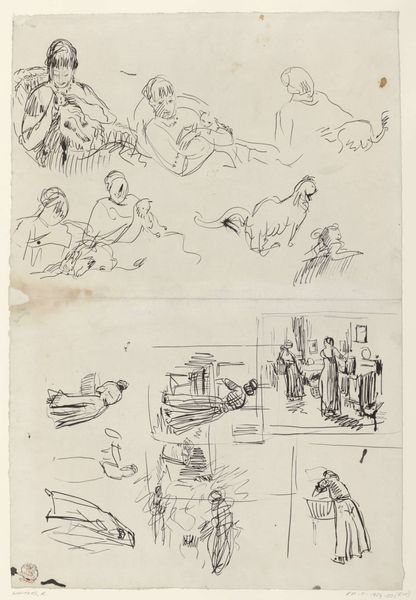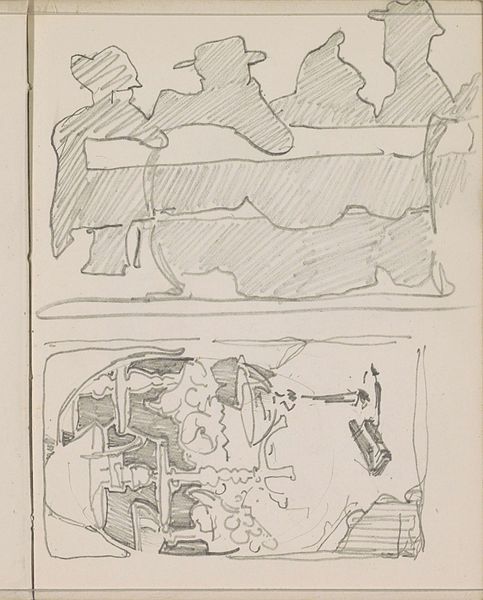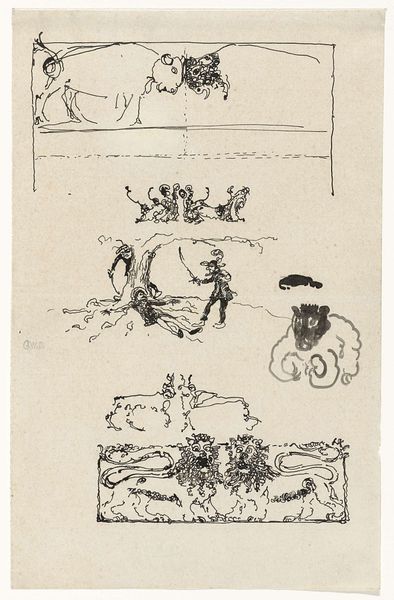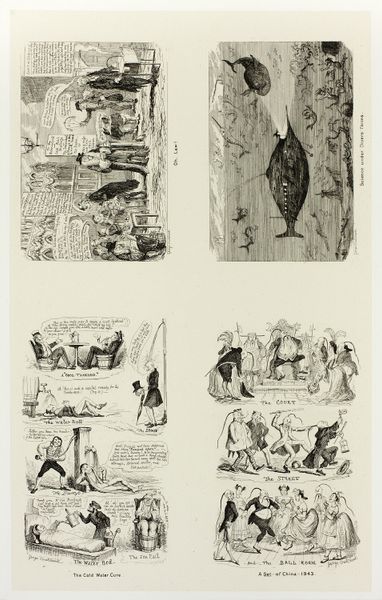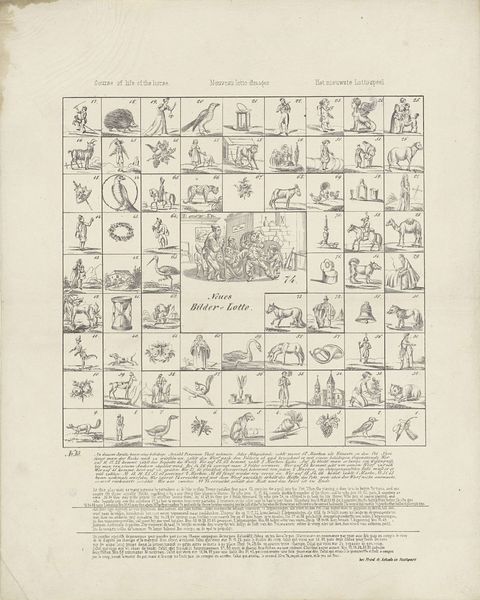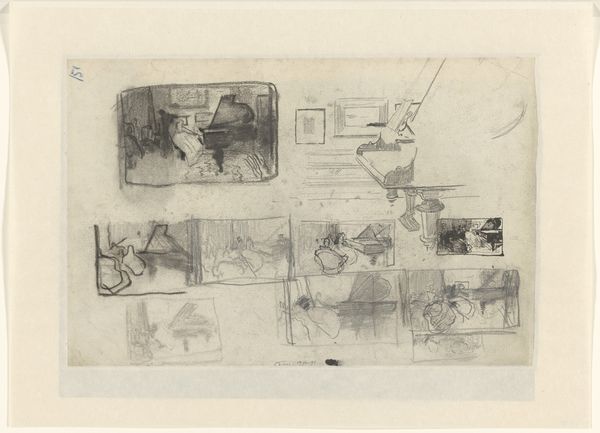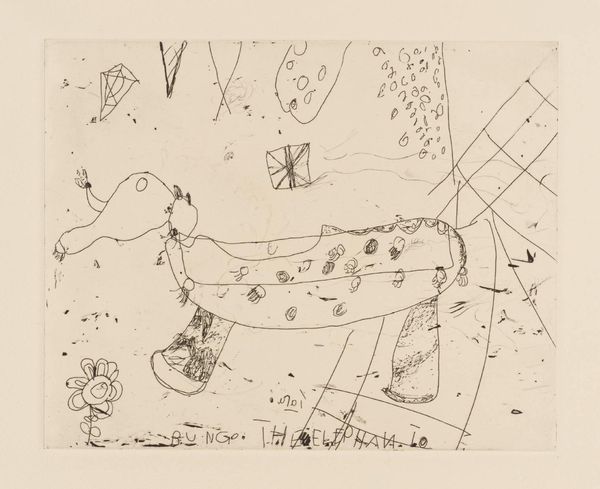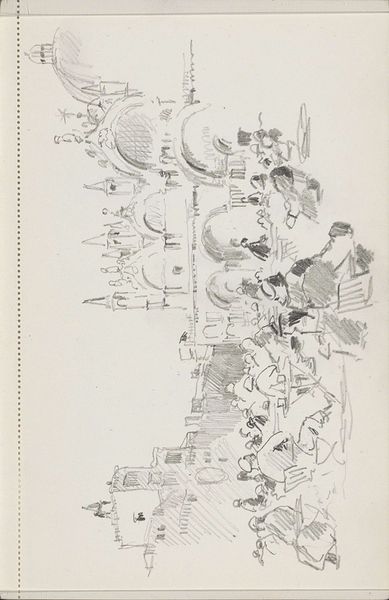
Little Nemo in Slumberland: "I don't like this, one little tiny bit, not one tiny weenie bit" 1906
0:00
0:00
drawing, ink, pen
#
drawing
#
art-nouveau
#
narrative-art
#
pen drawing
#
ink
#
comic
#
pen
Dimensions: image: 70.49 x 54.61 cm (27 3/4 x 21 1/2 in.) sheet: 72.39 x 56.2 cm (28 1/2 x 22 1/8 in.) top section: 31.12 x 57.15 cm (12 1/4 x 22 1/2 in.) bottom section: 41 x 22.5 cm (16 1/8 x 8 7/8 in.)
Copyright: National Gallery of Art: CC0 1.0
Curator: Here we have a drawing by Winsor McCay, specifically a page from his comic series *Little Nemo in Slumberland*, created in 1906. It's rendered in ink, a complex example of early comic art. What's your initial reaction? Editor: It’s immediately striking, even unsettling. The composition is quite elaborate and dreamlike. The balloon, the perspective... it creates a strange feeling of imbalance. Curator: It's meant to. McCay worked during a fascinating time in the mass production of illustrated periodicals. This isn’t simply drawing; it is also print production using reproducible media for a massive readership. The materiality of printed paper itself is central. Editor: Indeed. The sequential panels, though, clearly lay out the formal components. The progression draws your eye cleverly across the page with visual repetition. Note the circle and star motifs. The use of black and white tones establishes structure and guides the gaze through different areas of the comic. Curator: Exactly, each panel unfolds and disrupts any conventional layout. His creative process seems both precise and chaotic. McCay challenged boundaries between “high art” and “low craft”. He considered his own labor valuable. Editor: Speaking of, consider panel six: It encapsulates the feeling of childlike wonder amidst uncertainty. But from a more analytical perspective, the composition deliberately utilizes diagonal lines to generate dynamism and unease. Curator: The dreamscapes echo the anxieties about modern labor and life present at the turn of the century. It speaks to anxieties present during industrial transition, and this dream of wonder masks them in a world that children also found troubling and difficult. Editor: And yet, these stylistic complexities create the mood, don’t they? Ultimately, regardless of social critique, McCay displays a sophisticated understanding of the elements of art that provoke deep emotional responses. Curator: Yes, but consider further how printing capabilities, his wages, and his audiences shaped both the images and narratives. Editor: True, our divergent readings only deepen the comic's rich interpretive potential. Curator: Precisely. The comic medium itself proves crucial in how narratives of American social tensions and anxieties played out at the beginning of mass production in art and visual storytelling.
Comments
No comments
Be the first to comment and join the conversation on the ultimate creative platform.
